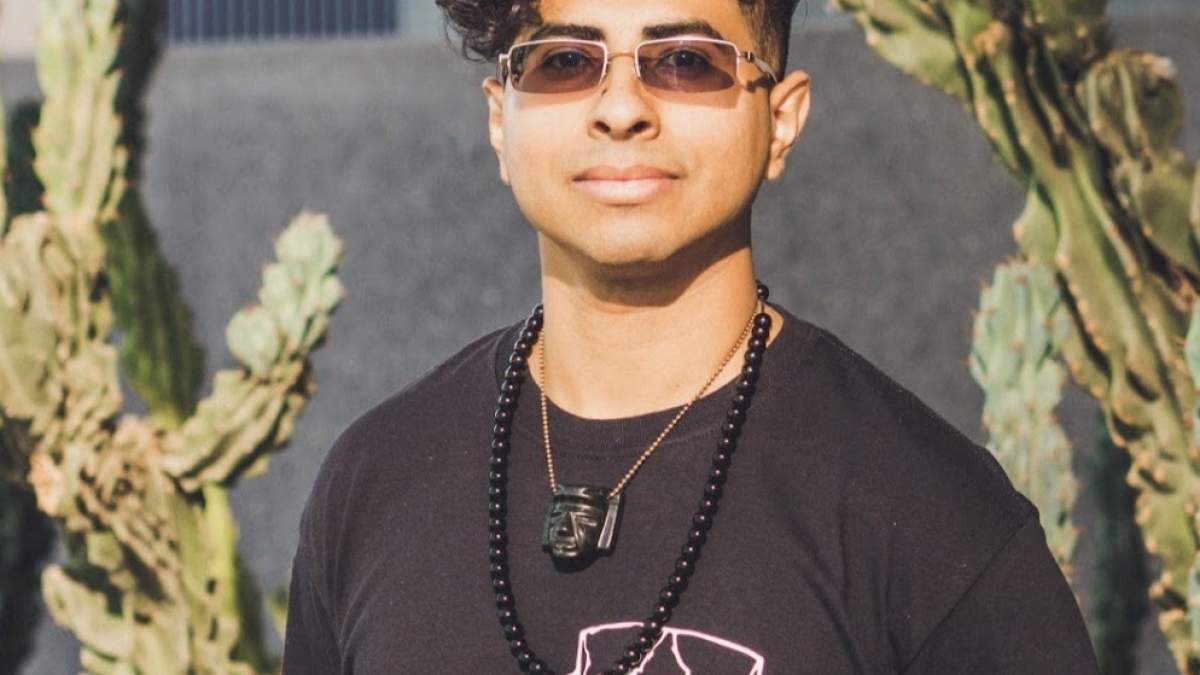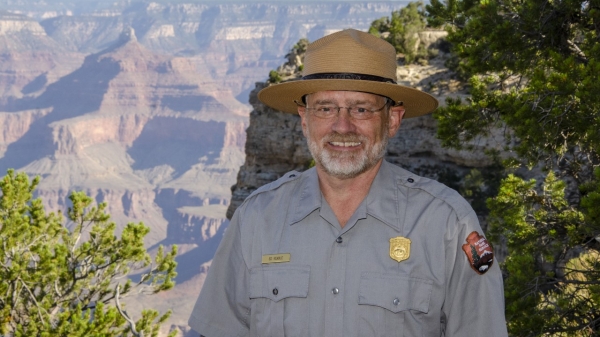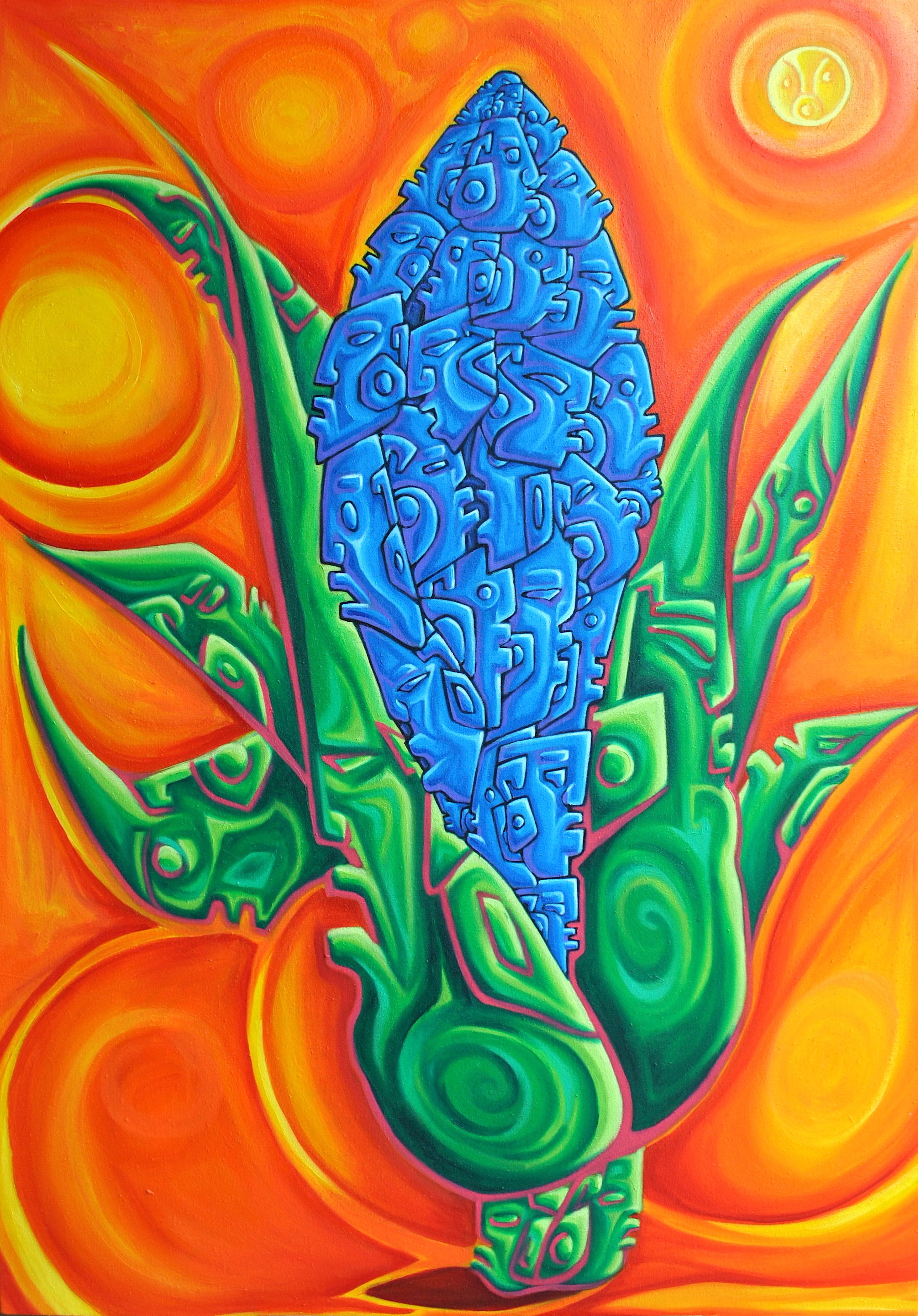Graduating art student gets inspiration from ancestors

Edgar Fernandez graduates this May with a Bachelor of Fine Arts in painting. Photo by Diego Nacho
Editor’s note: This is part of a series of profiles for spring 2019 commencement.
When artist Edgar Fernandez transferred to Arizona State University, he was looking for new inspiration.
“I discovered the inspiration I was looking for was within me all along, from my skin color to my ancestors and grandparents,” said Fernandez, a 28-year-old Chicano student who graduates this May with a Bachelor of Fine Arts in painting. “My perspective started to unfold through my upper division courses, where I discovered my true ancestral roots that lie at the core of my creative potential.”
Fernandez was born in Los Angeles and raised in Phoenix, but his parents are originally from Jalisco and Guerrero, Mexico.
“My ancestry is Purepecha from my mother’s side and Mezcala from my father’s side,” he said. “When I started my artistic career, a shaman from Sonora, Mexico, told me that I have Mayan ancestors.”
He said from that point on, his art has been deeply rooted in Mayan culture.
“Once I consciously knew who my ancestors were and the rich legacy they created, I felt new breath and drive where my creativity started to express itself naturally,” he said. “I learned that when I look within my ancestral background, I can always find new possibilities of expressing myself.”
And he hopes his artwork inspires others to do the same.
"Spirit of Maiz," 2018, 72 x 42 in. Oil on canvas.
“I hope to plant a seed of empowerment within the viewer to act on their own dreams.”
Fernandez answered some questions from ASU Now:
Question: What was your “aha” moment, when you realized you wanted to study the field you majored in?
Answer: My “aha” moment came to me during my last year when I was studying fine arts at Phoenix College. My major became more evident when I took a Painting 2 course at ASU and met great instructors. My ideas on canvas started to transform into my visual vocabulary.
Q: Why did you choose ASU?
A: I became excited about ASU's art program while attending Phoenix College. I received encouraging advice from artists who were guiding me to attend ASU to expand my vision on my artistic career.
Q: Which professor taught you the most important lesson while at ASU?
A: Mark Pomilio taught me the most important lesson by bringing out the best in myself and my art. My professor had high expectations from the beginning and made sure to give the best feedback. I learned that my dedication to refining my work could lead to visionary breakthroughs if I remain focused and determined.
Q: What’s the best piece of advice you’d give to those still in school?
A: You belong there just as much as any other student, and no matter how difficult the process may seem, keep your head up and be persistent because your dreams matter.
Q: What was your favorite spot on campus, whether for studying, meeting friends or just thinking about life?
A: My honors studio was my second home during my senior year. My studio was a space that offered me a place to study, reflection, collaboration and overall peace. Even in my most difficult moments, I was able to collect myself back in that space and get my motivation to accomplish my work for the day.
Q: What are your plans after graduation?
A: I plan to take my artwork to a national and international level by accomplishing residencies, collaborating with artists that challenge me to grow, and continuing to be a student wherever my art takes me. My plans also include to give back to my community that has been supportive of my artistic career here in Phoenix.
Q: If someone gave you $40 million to solve one problem on our planet, what would you tackle?
A: I would tackle a solution to solve the problem of violence against children. I would create an educational program at every public school that teaches the power of unity and how working together as a whole can transform the world in a positive way. The educational program will also teach students how to create inner peace through breathing techniques and meditation. This program will educate students on how to work collaboratively with others even if the other has different beliefs, ideas, religion, gender, ethnicity, etc. Finally, within the program I will share the importance of unconditional love and compassion toward humanity through my art.
More Arts, humanities and education

Grand Canyon National Park superintendent visits ASU, shares about efforts to welcome Indigenous voices back into the park
There are 11 tribes who have historic connections to the land and resources in the Grand Canyon National Park. Sadly, when the…
ASU film professor part of 'Cyberpunk' exhibit at Academy Museum in LA
Arizona State University filmmaker Alex Rivera sees cyberpunk as a perfect vehicle to represent the Latino experience.Cyberpunk…

Honoring innovative practices, impact in the field of American Indian studies
American Indian Studies at Arizona State University will host a panel event to celebrate the release of “From the Skin,” a…
